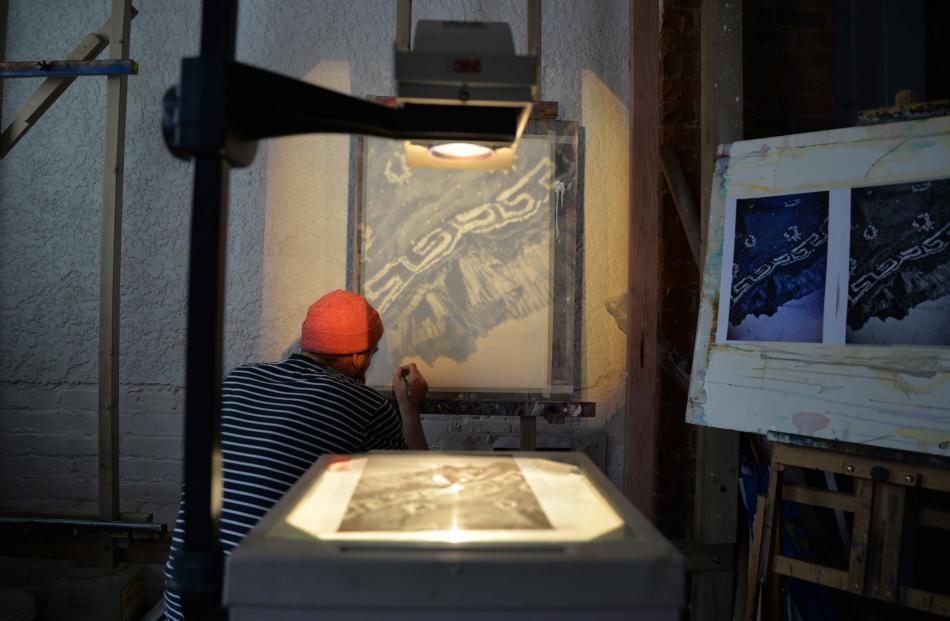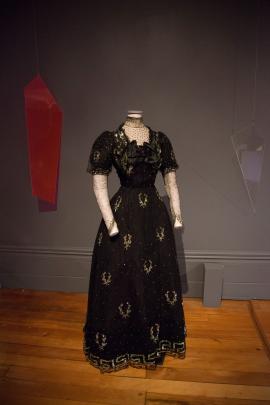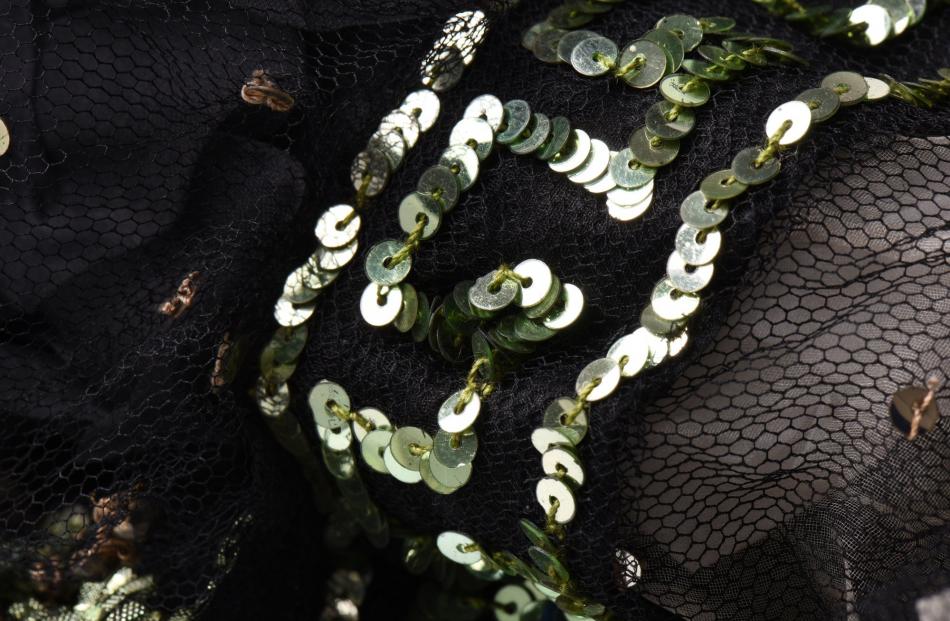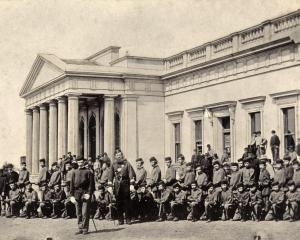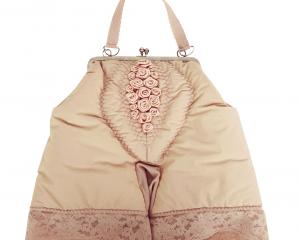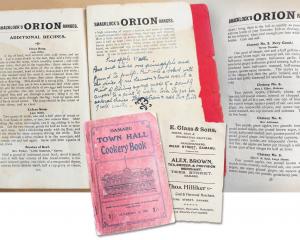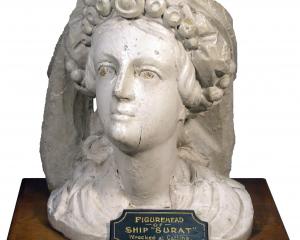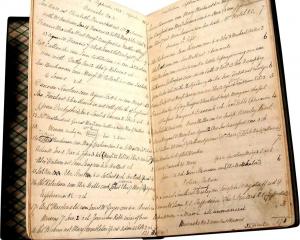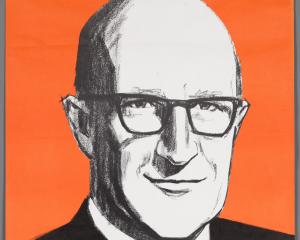When looking through Otago Museum’s dress and textile collection, Flynn Morris-Clarke saw something in a different light.
In Otago Museum’s latest exhibition, "Current", nine contemporary artists and designers have created a new work of art inspired by an object from the museum’s diverse dress and textile collection.
Each was invited to select an item they were inspired by, and each had a unique process and different reasons for their choice. When painter Flynn Morris-Clarke encountered the early 20th-century dinner dress in storage, his response was immediate and certain.
The dress is one of 108 garments that make up the Eppinghoven Collection of textiles, garments and accessories formerly belonging to Baroness Louise Marie Alexandrine von Eppinghoven. Louise Marie, also known as Lison, was the granddaughter of King Leopold I, of Belgium. The collection dates from the late 19th to the early 20th century, and was probably worn by both Lison and her mother, Anna Lydia Harris. The period’s key designers, including Doucet and Paquin, are represented, as well as major fashion features in design, technique, fabric and embellishment.
The silhouette of the dress suggests it is from the 1890s, a period when puffed sleeves made the waist look smaller by comparison, so was probably worn by Lison’s mother. It features a top layer of tulle embroidered with sequins, wrapped gold thread and crimped metal. These form a Napoleonic-style laurel wreath motif, which is repeated across the skirt, and a Greek key design along the hemline. The dress would have been designed to dazzle in candlelight.
When Flynn first viewed the dress it was laid flat in a box, the museum’s preferred method of storing fragile textiles. Clothing is inherently personal, each garment evokes a relationship with the body or a person. Flynn observed that, now in a museum context, the dress had taken on a dark, ghostly quality, as if abandoned.
Flynn’s process always begins with a photograph, his practice driven by the repainting of images. A photo of the ruffled hem of the dress provided the basis for his large-scale oil painting Nothing truly dies.
The result provides an alternative reading of the details of the dress, with the sequins becoming a constellation of stars in the night sky.
In the museum’s historic 1877 Gallery, the shimmering dinner dress and Flynn’s dramatic interpretation are displayed side by side, one representing the past, the other looking to the future. The space between the two is the site of inspiration in its purest state.
- By Jamie Metzger (Assistant Collection Manager, Humanities)
• See Flynn’s inspired outcome as well as eight others at Otago Museum’s exhibition "Current", which is open daily.

